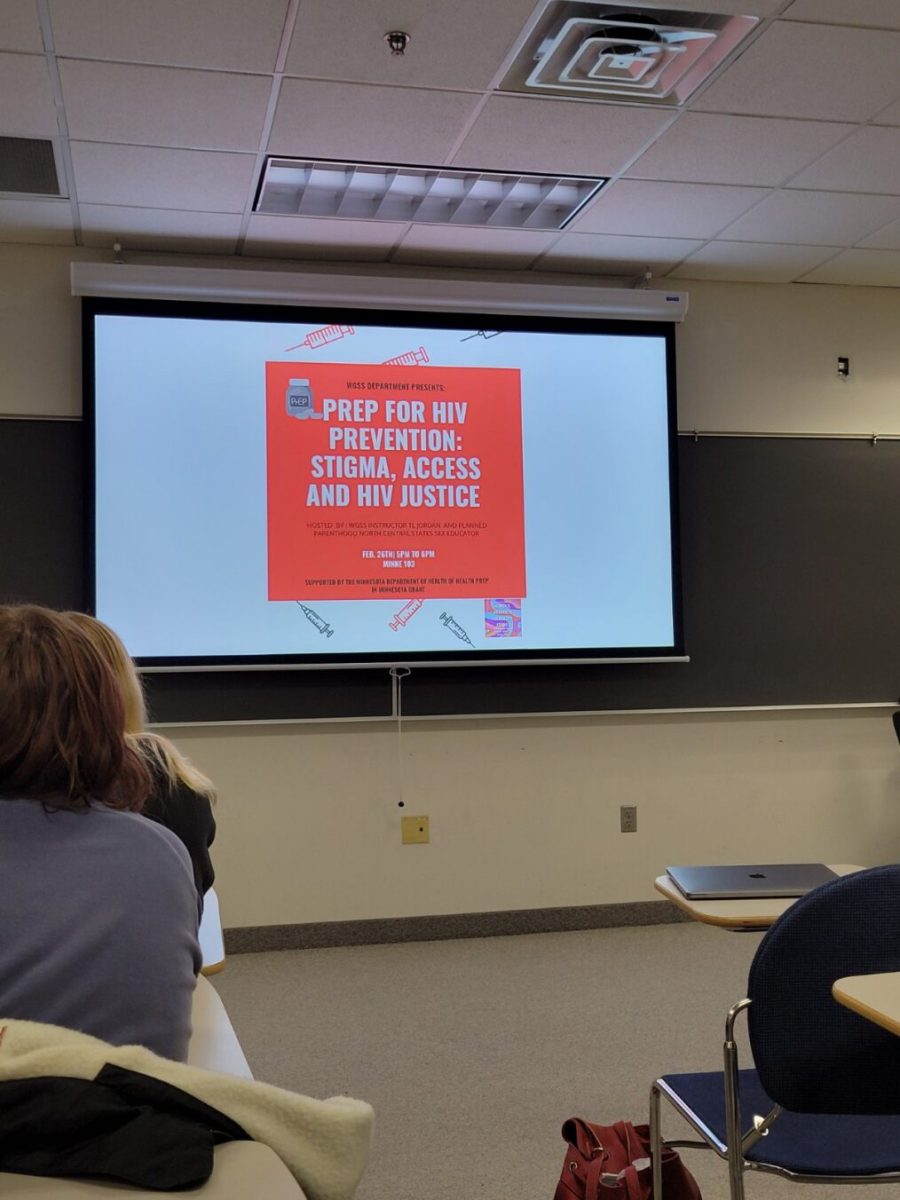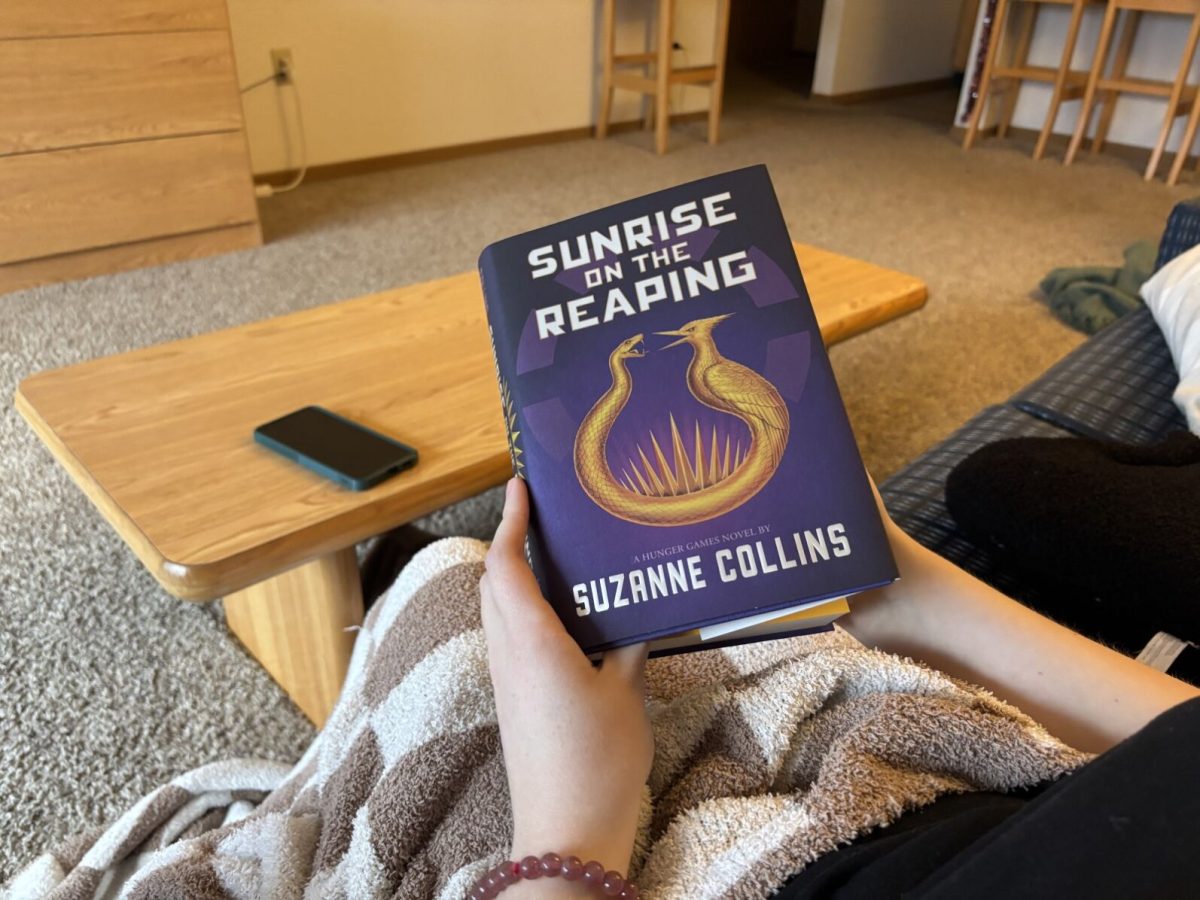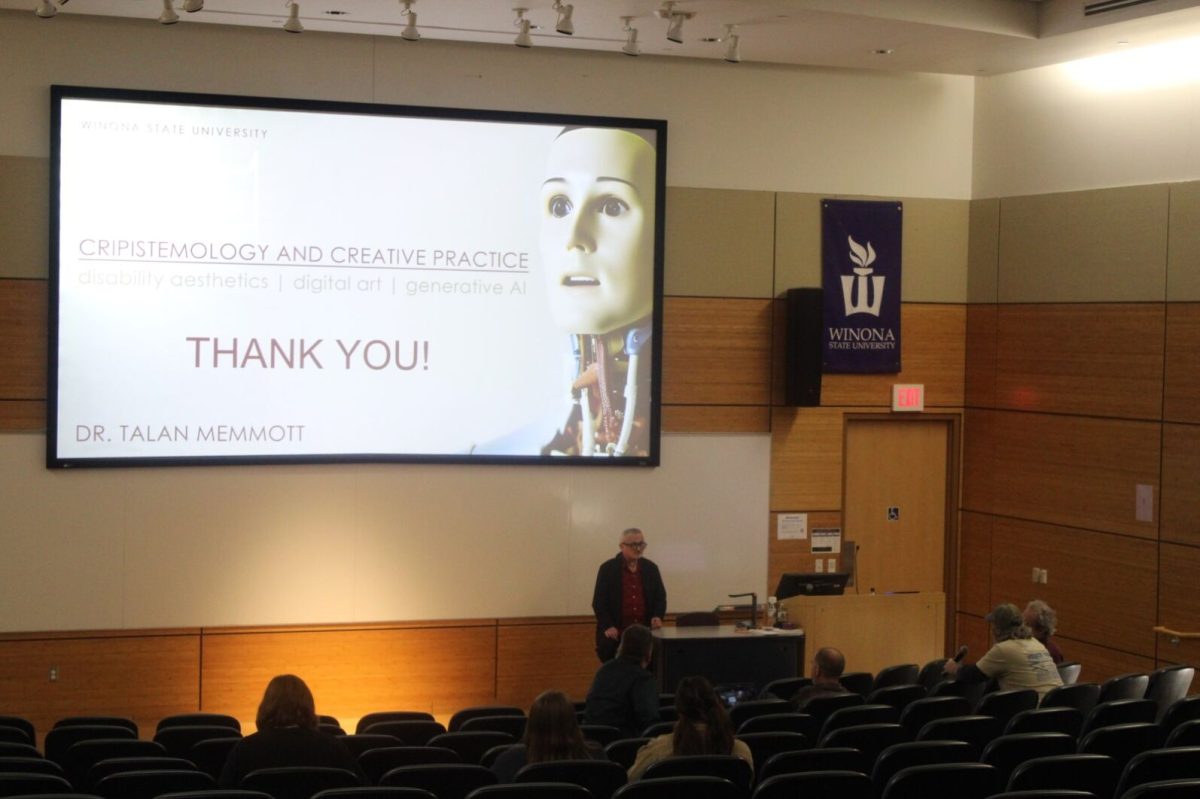End of the Trail statue finds new location
April 11, 2018
Earlier this past week, Winona State University experienced the removal of the “End of the Trail” statue, located near the Performing Arts Center. The statue’s history within the grounds of the University have spanned over a few decades.
Roger Boulay, an art professor at Winona State, provided more detail on the existence of the statue.
“The statue went up in 1997. A copy of the original ‘End of the Trail’ statue was donated by professor Ervin Bublitz. He donated a lot of art to the campus, particularly in the 90’s,” Boulay said.
For the students and faculty of Winona State, the “End of the Trail” statue has represented a different meaning for individuals. Chuck Ripley, an English professor at Winona State, explained the significance of the statue in his own words.
“I think the statue represents a romantic genocidal image of Native Americans that was very common in the late 19th and early 20th century,” Ripley said.
The “End of the Trail” statue was originally created by artist James Earle Frazer in 1915. It represented a vanishing race of savage warriors. With Frazer’s placement of the statue overlooking the Pacific Ocean in San Francisco, he intended to exhibit a greater meaning to his piece of art.
Cindy Killion, a mass comunications professor at Winona State, has different views on the statue.
“It conveys this idea that ‘Indians’ are being pushed into the Pacific Ocean. It’s a reminder for me of colonization and conquer,” Killion said.
While some of the students and faculty of Winona State recognized the statue as a piece of art, others felt disrespected. Colette Hyman, a history professor at Winona State, explained the reason for the removal process of the statue.
“The statue is a highly problematic and negative representation for many indigenous people. The statue representing an indigenous man, showed a state of defeat. A lot of speakers at Winona State who are indigenous have said ‘this statue offends me,’” Hyman said.
Through the efforts of Killion, a request for the removal of the statue was made in 2007.
“I didn’t want my students from Prairie Island to see the statue,” Killion said.
The first request for the statue’s removal did not pass and for the next seven years the statue remained in its current position.
“In 2014, Aaron Camacho and the Turtle Island Student Organization, TESO, resurrected the idea of bringing the statue down. President Scott Olson made the final decision to tear down the statue in 2017,” Killion said.
While there are rumors circulating around campus stating that the statue will not find a home on Winona State grounds, Boulay delivered his insight on the statue’s current situation.
“The statue was taken down temporarily to be moved to the second floor of the library. The library is a learning place and when the statue is put on display again, its use will be enhanced educationally aside from its original portrayal on campus,” Boulay said.
As the “End of the Trail” statue awaits its new location on campus, the empty space where the statue once resided will not remain empty for much longer.
“Winona State is going to develop an ‘indigenous garden’ and the movement is going to be led by members of the Dakota, Ojibwa and Lakota tribes. The garden had been in the works for 15 years and it will hold plants that are native to this region,” Boulay said.







































